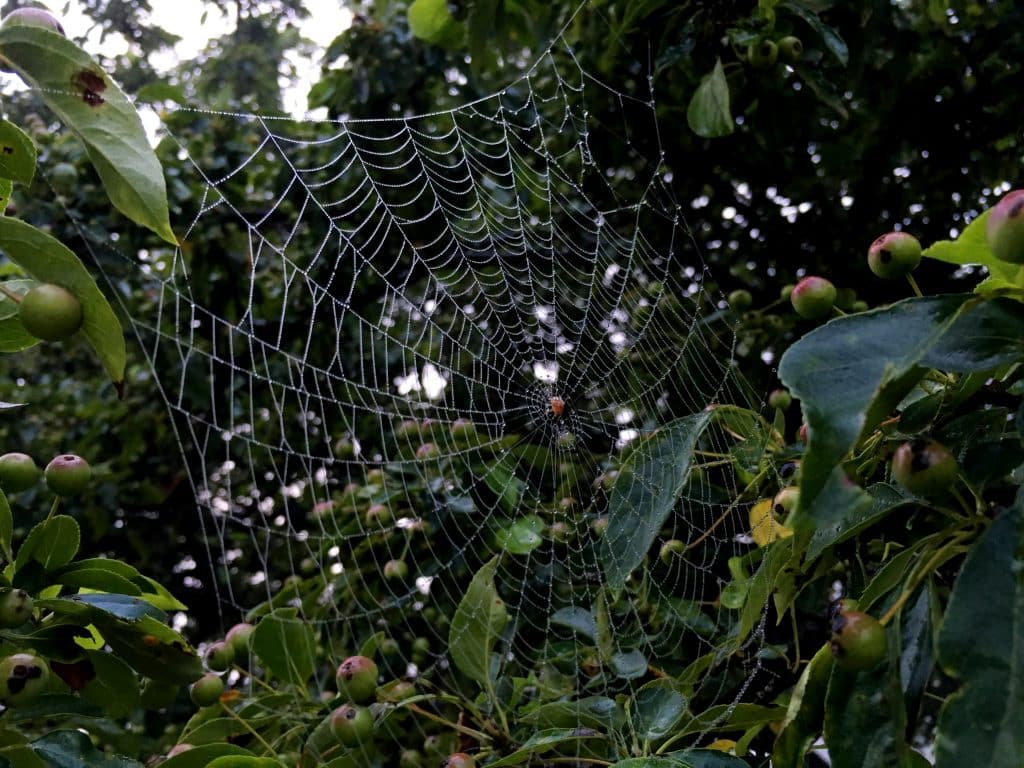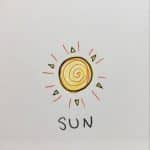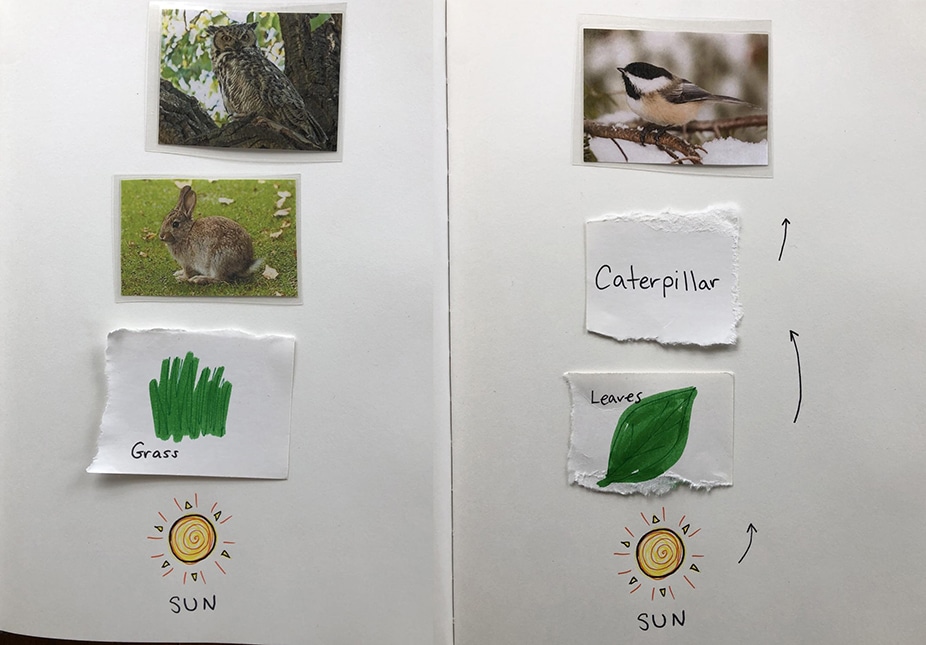
How does energy move through an ecosystem? What is a food chain or web? What different roles do plants and animals play in these interconnected webs? Let’s look at all these webs!
Energy Starts with the Sun
Plants and algae have the amazing ability to do photosynthesis, the process of using energy from the sun to make their own nutrients. They make their own food! The flow of energy from the sun to growing plants around the world is the foundation of life on Earth. This process fuels the many ecosystems we live in and can enjoy learning about!
Everyone Needs to Eat: Trophic Levels
To start, plants are producers–they produce their own food. Producers are very important in any ecosystem, as they provide energy and food for other organisms in higher trophic levels. Those that eat, or consume, the producers are called primary consumers. These are the herbivores, animals that survive by eating plants.
Going up one more trophic level, we come to the secondary consumers – –omnivores and carnivores who eat the primary consumers. These are the wildlife who hunt or scavenge.
These relationships between plants, animals, and other organisms are sometimes described as chains because different species are linked together by who eats who! In reality, several of these chains might link together and combine to form a tangled, interconnected web.
Reading
National Geographic – Food Web Encyclopedia Entry, 3rd Grade Text Level: Learn more about food webs and get a chance to study the many vocabulary words in this post from Nat Geo!
Practicing Food Webs
Now that we’ve covered some of the basics, here are a few different ways you can try practicing your understanding of food webs using Maine species.
Outside: Think of this as a scavenger hunt. Try to find different combinations of food chains around you by looking for the organisms themselves (or evidence that they might be nearby.) If you’re not quite sure what an animal eats, try doing a little research. Use these prompts to get started. How many chains/webs can you think of or find . . .
- . . . that all start with the same producer (for example, acorn or grass)?
- . . . that have more than one possible secondary consumer?
- . . . where all consumers are birds?
- . . . where all consumers are fish?
- . . . that feature insects?
Take notes or pictures while you’re outside, so that later you can record these awesome connections you’ve discovered. In your nature journal, consider using a drawing, or model, to represent how different food chains around you interact.
Indoors/Anywhere: Build some of these food chains and webs by representing the different parts of each and arranging them together. Think of this like a card game. First we need to assemble our “deck”, the different Maine plant and wildlife species that we’ll combine into food chains. You might want to start by listing some common Maine species you know. For any consumers, brainstorm what you think/know that they eat.
For the “cards” you can use:
- Printed photos from the internet
- Drawn pictures
- Names of plants/animals written on slips of paper
- Cut-out pictures from old magazines
- A combination of the above
Remember that it all starts with the sun! A simple drawing is great, but don’t skip this important first link in the chain.
 Once you’ve gathered your “cards”, it’s time to play by laying them out in a line or chain in different combinations. Pick a habitat or ecosystem that you know (at least) a little bit about or work with a grown-up or sibling:
Once you’ve gathered your “cards”, it’s time to play by laying them out in a line or chain in different combinations. Pick a habitat or ecosystem that you know (at least) a little bit about or work with a grown-up or sibling:
- First, place or draw the SUN–where energy starts.
- Next, choose a producer that you might find in that habitat
- What plants will form the base of this chain? What feeds other life there?
- Then, choose a local herbivore, or plant-eater, that could be the primary consumer here.
- Lastly, consider what secondary consumer (either an omnivore or carnivore) might eat that herbivore you chose. Place that as the predator at the top of this chain. Nice work!
- Try making more of these chains for the same habitat. Do they overlap? Can you connect them to form a web?

These are very simple versions of very complex systems around us. Get creative and try to show or talk through where other relationships or connections might exist. Is there more than one secondary consumer or predator competing for lower levels as food?
Our educators, scientists, advocates, and naturalists are committed to keeping you connected to the natural world as we deal with the coronavirus situation together. Check in every weekday on our Connections page for family activities, parent/teacher tips, backyard birding, nature exploration at our sanctuaries, and more.
Next Generation Science Standards
“Crosscutting Concepts” for all Elementary Grades in this module:
- Patterns
- Systems and System Models
- Energy and Matter
K Performance Expectations:
- Use observations to describe patterns of what plants and animals (including humans) need to survive. K-LS1-1
- Use a model to represent the relationship between the needs of different plants and animals (including humans) and the places they live. K-ESS3-1
- Make observations to determine the effect of sunlight on Earth’s surface. K-PS3-1
2nd Grade Performance Expectations:
- Make observations of plants and animals to compare the diversity of life in different habitats. 2-LS4-1
3rd Grade Performance Expectations:
- Construct an argument with evidence that in a particular habitat some organisms can survive well, some survive less well, and some cannot survive at all. 3-LS4-3
- Construct an argument that some animals form groups that help members survive. 3-LS2-1
4th Grade Performance Expectations:
- Construct an argument that plants and animals have internal and external structures that function to support survival, growth, behavior, and reproduction. 4-LS1-1
5th Grade Performance Expectations:
- Support an argument that plants get the materials they need for growth chiefly from air and water. 5-LS1-1
- Develop a model to describe the movement of matter among plants, animals, decomposers, and the environment. 5-LS2-1
- Use models to describe that that energy in animals’ food (used for body repair, growth, motion, and to maintain body warmth) was once energy from the sun. 5-PS3-1
NGSS Lead States. (2013). Next Generation Science Standards: For States, By States. Retrieved from http://www.nextgenscience.org/
